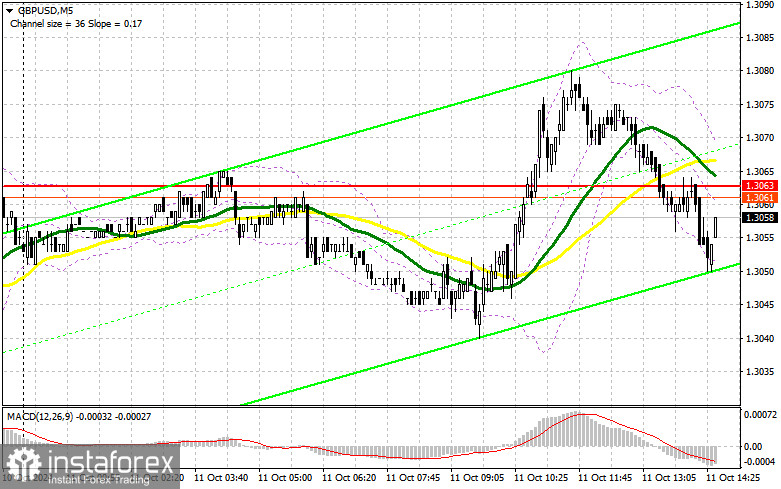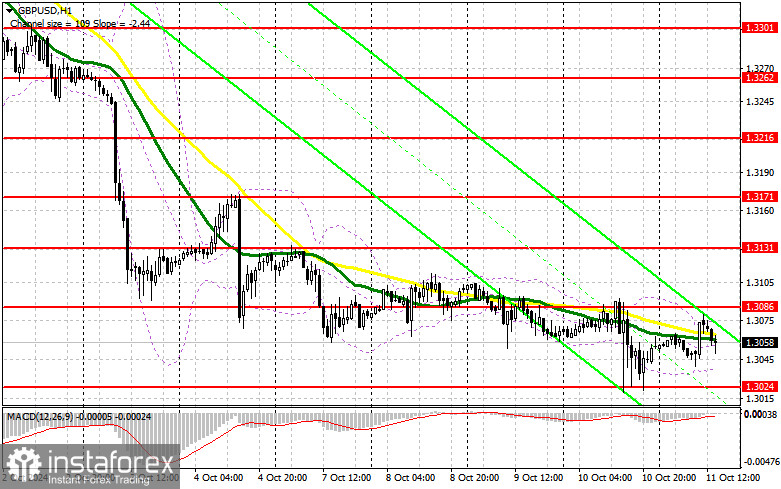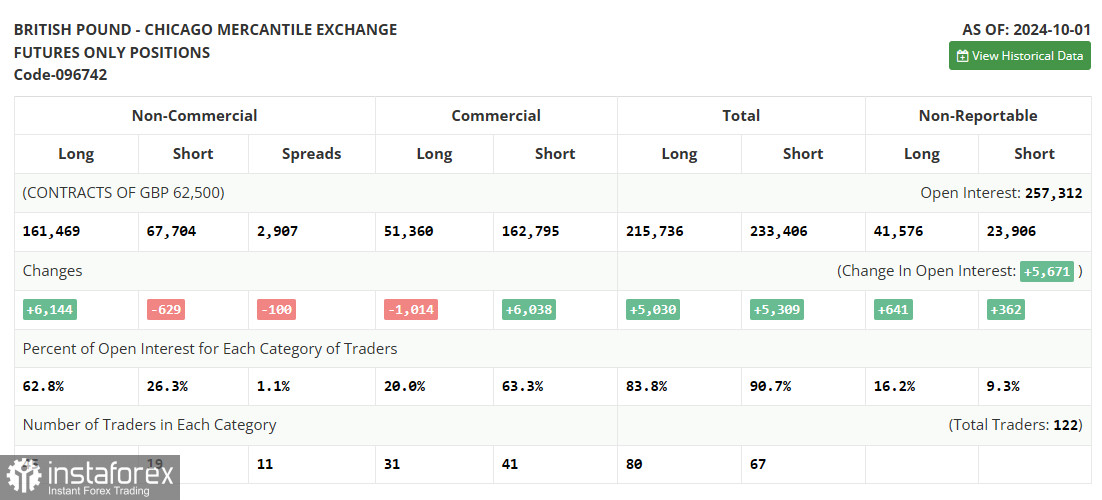In my morning forecast, I focused on the 1.3063 level and planned to make trading decisions from that point. Let's look at the 5-minute chart and analyze what happened. The rise and breakout of 1.3063 occurred, but the retest never occurred. As a result, I was left without suitable entry points. The technical outlook was fully revised for the second half of the day.

To open long positions on GBP/USD:
The U.S. Producer Price Index for September will be the main fundamental indicator today. Reports of rising inflation in the U.S., similar to yesterday's CPI release, will likely trigger further dollar purchases and push GBP/USD below the weekly low. FOMC representatives' speeches are likely to be of secondary importance. If the pound declines, a false breakout around 1.3024—the weekly low—will provide an opportunity for a recovery towards the 1.3086 resistance, just below, which the moving averages favor sellers. A breakout and retest of this range from above will strengthen the chances of an upward trend by the end of the week. This could trigger sellers' stop orders, providing a good entry point for long positions targeting 1.3131. The next target will be the 1.3171 level, where I plan to take profits. If GBP/USD falls and lacks buying activity around 1.3024 in the second half of the day, the bearish trend will return. This could lead to a decline and retest of the 1.2975 support. Only a false breakout there would provide a good opportunity for opening long positions. I plan to buy GBP/USD immediately on a rebound from the 1.2941 low, anticipating a 30-35 point correction intraday.
To open short positions on GBP/USD:
Sellers are in no rush to assert themselves, leaving room for further upward correction of the pound at the end of the week. It is crucial for bears to defend the 1.3086 resistance in the event of a rise. Only a false breakout at this level will provide a suitable opportunity for opening short positions with a target of 1.3024—the weekly and monthly low. A breakout and retest of this range from below will put pressure on buyers, triggering stop orders and paving the way to 1.2975. The next target will be the 1.2941 level, where I plan to take profits. A retest of this level would strengthen the bearish market. If GBP/USD rises and lacks seller activity at 1.3086 in the second half of the day, buyers will try to reclaim the market. Bears will then have to retreat to the 1.3131 resistance, which could become the upper boundary of a sideways channel. I will sell only on a false breakout there. If there's no downward movement at that level either, I'll look for short positions on a rebound around 1.3171, anticipating a 30-35 point downward correction.

The COT report (Commitment of Traders) for October 1 showed an increase in long positions and a minimal reduction in short positions. Clearly, recent UK statistics have created additional hurdles for further purchases of the pound, but considering the current conditions, few are considering sales either. However, it's important to understand that this report does not account for the recent changes in the market at the end of last week following the release of strong labor market data. Therefore, it doesn't warrant too much attention. The latest COT report indicated that long non-commercial positions increased by 6,144 to 161,469, while short non-commercial positions fell by 629 to 67,704. As a result, the gap between long and short positions decreased by 100.
Indicator Signals:
Moving Averages:
Trading is taking place around the 30- and 50-day moving averages, indicating a sideways market.
Note: The period and price of moving averages are considered by the author on the H1 hourly chart and differ from the general definition of classic daily moving averages on the D1 daily chart.
Bollinger Bands:
In case of a decline, the lower boundary of the indicator at around 1.3040 will act as support.
Indicator Descriptions:
- Moving average (MA): Determines the current trend by smoothing volatility and noise. Period 50, marked in yellow on the chart.
- Moving average (MA): Determines the current trend by smoothing volatility and noise. Period 30, marked in green on the chart.
- MACD Indicator (Moving Average Convergence/Divergence): EMA Fast period 12, EMA Slow period 26, SMA period 9.
- Bollinger Bands: Period 20.
- Non-commercial traders: Speculators such as individual traders, hedge funds, and large institutions using the futures market for speculative purposes and meeting certain criteria.
- Long non-commercial positions: Represents the total long open position of non-commercial traders.
- Short non-commercial positions: Represents the total short open position of non-commercial traders.
- Net non-commercial position: The difference between short and long positions of non-commercial traders.





















